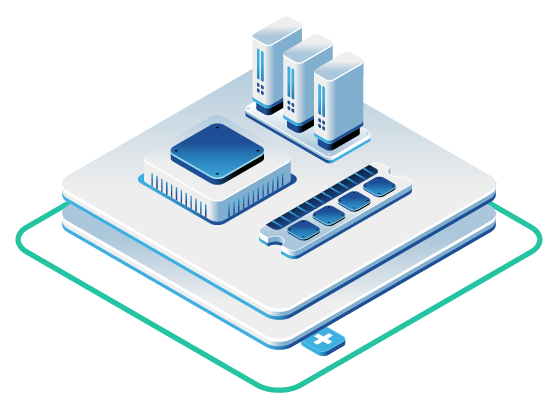In this article
- Understanding the Migration Imperative
- Pre-Migration Assessment and Planning
- Storage Migration Strategy
- Application and Framework Migration
- Proof of Concept Phase
- Post-Migration Optimization
- Migration Timeline and Risk Management
- Support and Professional Services
- Measuring Migration Success
- Wrapping Up: Migrating Big Data Workloads to OpenMetal
When you’re tasked with migrating big data workloads from public cloud platforms, the stakes are high. Your organization depends on these systems for critical business insights, and any misstep during migration could result in downtime, performance degradation, or unexpected costs. As data volumes continue to grow and public cloud bills become increasingly unpredictable, more data architects are evaluating private cloud alternatives that offer better cost control and performance guarantees.
The challenge isn’t whether to migrate, it’s how to do it successfully while minimizing risk and maximizing the benefits of your new infrastructure. This guide provides a practical framework for migrating your big data workloads to OpenMetal’s private cloud platform, drawing from real-world migration patterns and proven strategies that reduce complexity and accelerate time to value.
Understanding the Migration Imperative
The decision to migrate big data workloads from public cloud platforms rarely happens overnight. Most organizations reach what experts call a “migration imperative” when the sum of compromises – financial, performance, and control limitations – begins to outweigh the convenience of their current platform. For big data workloads specifically, this tipping point often manifests in three key areas.
Migrating an existing data warehouse to the cloud is a complex process of moving schema, data, and ETL, but there are real benefits, according to data modernization experts. And when you’re already in the cloud and experiencing limitations, the benefits shift toward platforms that can provide dedicated resources and predictable performance.
Cost Unpredictability
Public cloud billing for big data workloads creates a perfect storm of unpredictability. AWS EMR costs can fluctuate dramatically based on data processing volumes, and egress fees for moving data between nodes can represent a significant percentage of your monthly bill. When you’re running Spark jobs that shuffle terabytes of data between worker nodes, those inter-zone transfer fees add up quickly.
Performance Variability
Public cloud’s multi-tenant architecture introduces the “noisy neighbor” problem, where other customers’ workloads can impact your performance. For big data frameworks like Hadoop and Spark that require consistent disk I/O and network throughput, this variability can cause job failures and extend processing times unpredictably.
Limited Control
Advanced big data deployments often require kernel-level tuning, custom networking configurations, and specialized storage layouts. Public cloud platforms limit your ability to optimize at the hardware level, preventing you from achieving maximum performance from your infrastructure investment.
OpenMetal addresses these challenges through a single-tenant private cloud architecture that provides dedicated hardware resources, predictable pricing, and full root access for optimization. Our platform is specifically validated for big data workloads, including ClickHouse, Hadoop, and Spark deployments.
Pre-Migration Assessment and Planning
Before beginning any migration, you need a clear understanding of your current environment and future requirements. This assessment phase determines your migration strategy and helps identify potential challenges before they become problems.
Analyzing Your Current Architecture
Start by documenting your existing big data infrastructure in detail. A step-by-step approach includes several pre-migration steps that help ensure success with migration tactics and execution. This documentation should include:
Compute Resources: Catalog your current instance types, CPU configurations, and memory allocations. Note that direct “vCPU-to-CPU” comparisons don’t translate well when moving from shared virtualized resources to dedicated hardware. Performance characteristics change significantly on bare metal, often allowing you to achieve the same workload performance with fewer logical cores.
Storage Architecture: Document your current storage setup, including block storage volumes, object storage usage, and data distribution patterns. If you’re using services like Amazon EBS or S3, identify which workloads require high-IOPS block storage versus object storage capabilities.
Network Traffic Patterns: Map your east-west traffic flows between cluster nodes. This is particularly important for Spark workloads where data shuffling between workers creates significant network overhead. Public cloud platforms charge for this inter-node communication, while OpenMetal provides unlimited internal traffic on 20 Gbps network interfaces.
Performance Baselines: Establish current performance metrics for your key workloads. Measure job completion times, throughput rates, and resource utilization patterns. These baselines will help you validate that your migrated environment meets or exceeds current performance.
Defining Migration Goals and Success Criteria
Start the planning process with a clear picture of the reasons for migrating your data warehouse to the cloud. Consider goals such as agility, performance, growth, cost savings and labor savings. For big data migrations to OpenMetal, common goals include:
- Cost Predictability: Moving from variable, usage-based billing to fixed monthly costs
- Performance Consistency: Eliminating noisy neighbor issues through dedicated hardware
- Operational Control: Gaining root access for advanced tuning and optimization
- Scalability: Establishing a foundation for growth without vendor lock-in
Each goal should have measurable success criteria. For example, if cost predictability is a primary driver, establish target monthly spending ranges and compare them to your current public cloud bills’ variance.
Network Architecture Review
One of the most important aspects of big data migration planning involves reviewing your network architecture. On public cloud platforms, inter-node communication between cluster components like data nodes, name nodes, and processing nodes often traverses billable network paths.
OpenMetal’s free internal traffic on high-speed networks eliminates this cost concern, but you need to ensure your migration takes advantage of this benefit. Review your cluster communication patterns and plan to configure all inter-node traffic to use private network interfaces. This single architectural decision can eliminate thousands of dollars in monthly operational costs.
Storage Migration Strategy
Moving from public cloud storage services to OpenMetal’s Ceph-based storage requires careful planning, but the transition can be surprisingly straightforward with the right approach.
Understanding Ceph Storage Architecture
OpenMetal clouds use Ceph as the underlying storage platform, providing both object storage (similar to S3) and block storage (similar to EBS) capabilities. This open source storage system offers several advantages for big data workloads:
High-Performance Object Storage: By deploying a RADOS Gateway on your OpenMetal cloud, you get an S3-compatible API that works with existing tools and applications. In many cases, migration requires only changing the endpoint URL in your application configurations.
Direct NVMe Block Storage: For workloads requiring high-performance block storage such as HDFS metadata servers or database components, you can create virtual machines with direct access to NVMe storage, bypassing network storage latency entirely.
Data Migration Execution
The actual data migration process depends on your storage requirements and data volumes. For object storage migrations, standard S3 tools work seamlessly with OpenMetal’s RADOS Gateway. This means you can use familiar tools like AWS CLI, s3cmd, or rclone to transfer data.
For large datasets, consider using parallel transfer tools to maximize throughput. OpenMetal’s high-speed networking can sustain transfer rates that significantly exceed public cloud internal transfer speeds, often reducing migration time compared to moving data between cloud providers.
Block Storage Migration: When migrating block storage volumes, create appropriately sized Ceph RBD volumes on your OpenMetal infrastructure. The performance characteristics of NVMe-backed storage often provide substantial I/O improvements over network-attached storage, which may allow you to achieve better performance with smaller volumes.
Application and Framework Migration
Migrating the applications and big data frameworks that form the core of your analytics infrastructure requires a systematic approach that minimizes risk while maximizing the benefits of your new platform.
Hadoop Cluster Migration
When migrating Hadoop clusters to OpenMetal, the process involves several key components that must work together.
HDFS Data Migration: Plan your HDFS data migration during a maintenance window when write operations can be suspended. Use Hadoop’s built-in distcp utility to copy data from your existing cluster to the new OpenMetal-hosted cluster. The high-speed networking on OpenMetal infrastructure often allows these transfers to complete faster than transfers between availability zones on public cloud platforms.
Configuration Optimization: Take advantage of OpenMetal’s root access to optimize your Hadoop configuration for the underlying hardware. This includes tuning Java heap sizes, configuring direct memory access for improved performance, and optimizing network buffer sizes for the high-speed networking environment.
Spark Workload Migration
Apache Spark workloads benefit from OpenMetal’s architecture, particularly due to the elimination of data shuffle costs and the ability to tune the underlying system for Spark’s specific requirements.
Driver and Executor Configuration: Reconfigure your Spark applications to take advantage of the dedicated hardware resources. With no resource contention from other tenants, you can often run larger executors with more memory, reducing the total number of tasks and improving overall job performance.
Shuffle Optimization: Configure Spark to use local disks for shuffle operations when possible, taking advantage of the high-performance NVMe storage. This reduces network overhead and improves job completion times, especially for shuffle-heavy workloads.
Proof of Concept Phase
Before committing to a full migration, implement a proof of concept to validate your assumptions and refine your migration approach. This phase helps identify potential issues and provides confidence in your migration plan.
PoC Workload Selection
Choose representative workloads that exercise different aspects of your infrastructure. Good candidates include:
- A typical ETL job that processes a standard daily data volume
- An interactive analytics query that users run frequently
- A machine learning training job that requires sustained compute performance
These workloads should represent your most important use cases and help validate that the new environment meets your performance requirements.
Performance Validation
During the PoC, measure the same metrics you established during your baseline assessment. Compare job completion times, resource utilization, and overall system responsiveness. Many organizations find that the dedicated hardware and optimized configurations on OpenMetal actually improve performance compared to their public cloud deployments.
Resource Rightsizing: Use the PoC to determine optimal resource allocations for your migrated workloads. The performance characteristics of dedicated hardware often allow you to achieve the same results with different resource configurations, potentially reducing your overall infrastructure requirements.
Post-Migration Optimization
The migration itself is only the beginning. The real value of moving to OpenMetal comes from optimizing your environment to take full advantage of the dedicated infrastructure and root access capabilities.
System-Level Tuning
With root access to your infrastructure, you can implement optimizations that are impossible on public cloud platforms. These optimizations can significantly improve performance for big data workloads:
Kernel Parameter Tuning: Adjust Linux kernel parameters like vm.swappiness, dirty page ratios, and network buffer sizes to optimize for your specific workloads. For big data applications that handle large amounts of data, these tunings can improve I/O performance and reduce memory pressure.
Storage Optimization: Configure direct I/O paths, adjust filesystem parameters, and implement appropriate mount options for your storage volumes. These optimizations can reduce latency and increase throughput for data-intensive operations.
Network Optimization: Tune network parameters to take advantage of the high-speed networking infrastructure. This includes adjusting TCP window sizes, buffer configurations, and interrupt handling to maximize network throughput.
Application-Specific Optimizations
Each big data framework has specific optimization opportunities that become available with dedicated infrastructure:
ClickHouse Optimization: If you’re running ClickHouse for real-time analytics, you can optimize memory allocation, configure appropriate data compression schemes, and tune query processing parameters based on your specific hardware configuration.
Kafka Configuration: For data streaming workloads, optimize Kafka broker configurations, adjust log segment sizes, and configure appropriate retention policies based on your available storage and performance requirements.
Migration Timeline and Risk Management
A successful migration requires careful timing and risk management strategies that minimize business impact while ensuring a smooth transition.
Phased Migration Approach
Taking a “lift and shift” approach is tempting. It seems easy and straightforward to simply move data and processing to the cloud. This approach, however, rarely succeeds. Changes are typically needed to adapt data structures, improve processing, and ensure compatibility with the chosen cloud platform. Incremental migration is more common and usually more successful.
Implement your migration in phases to reduce risk and allow for course corrections:
Phase 1: Non-Critical Workloads: Start with development environments and non-critical analytics jobs. This allows your team to become familiar with the new environment without risking production systems.
Phase 2: Batch Processing: Migrate scheduled batch jobs and ETL processes. These workloads are typically more fault-tolerant and can be easily rolled back if issues arise.
Phase 3: Critical Production Systems: Move your most important production workloads after validating the platform with less critical systems.
Parallel Operations Strategy
During the migration, maintain parallel operations between your existing environment and OpenMetal infrastructure. This approach provides a safety net and allows for rapid rollback if issues arise. Run critical workloads on both platforms until you’re confident in the new environment’s stability and performance.
Data Consistency and Validation
Implement comprehensive data validation procedures to ensure consistency between your source and target environments. This includes:
- Comparing row counts and data checksums for migrated datasets
- Validating that analytical queries produce consistent results
- Testing backup and recovery procedures on the new platform
Support and Professional Services
OpenMetal’s cloud support services provide personalized assistance throughout the migration process. This support begins with a consultation to review your IT needs and business goals, extends through the build and deployment stages, and continues with ongoing operational support.
Direct Engineer Access: A key differentiator is direct access to cloud engineers via Slack for questions and support during your migration. This collaborative approach ensures you have expert guidance when facing complex migration challenges.
Ongoing Optimization: After migration, the support team provides monitoring, assessments, and service recommendations to ensure optimal performance and support for future growth.
Measuring Migration Success
Define clear metrics for measuring the success of your migration project. These metrics should align with your original migration goals and provide quantifiable evidence of improvement:
Cost Metrics: Compare your monthly infrastructure costs before and after migration. Include egress fees, compute costs, and storage expenses in your calculations. Most organizations see cost reductions of 25-50% when moving from public cloud to OpenMetal.
Performance Metrics: Measure improvements in job completion times, query response times, and overall system responsiveness. Document any performance gains from optimizations enabled by dedicated hardware and root access.
Operational Metrics: Track operational improvements such as reduced time spent on cost optimization, improved deployment flexibility, and enhanced ability to customize your environment for specific requirements.
Wrapping Up: Migrating Big Data Workloads to OpenMetal
Migrating big data workloads to OpenMetal requires careful planning and execution, but the benefits like predictable costs, dedicated performance, and operational control make the effort worthwhile for organizations that have reached the public cloud tipping point.
The key to success lies in thorough preparation, phased execution, and taking advantage of OpenMetal’s unique capabilities. With dedicated hardware, unlimited internal networking, and full root access, you can optimize your big data infrastructure in ways that simply aren’t possible on public cloud platforms.
Start your migration journey with a proof of concept that validates your approach and demonstrates the value of OpenMetal’s private cloud platform. The combination of predictable pricing, dedicated performance, and expert support provides the foundation for scalable, cost-effective big data operations that can grow with your organization’s needs.
Ready to begin your migration? Contact our team to discuss your specific requirements and develop a migration strategy tailored to your environment.
Schedule a Consultation
Get a deeper assessment and discuss your unique requirements.
Read More on the OpenMetal Blog


































